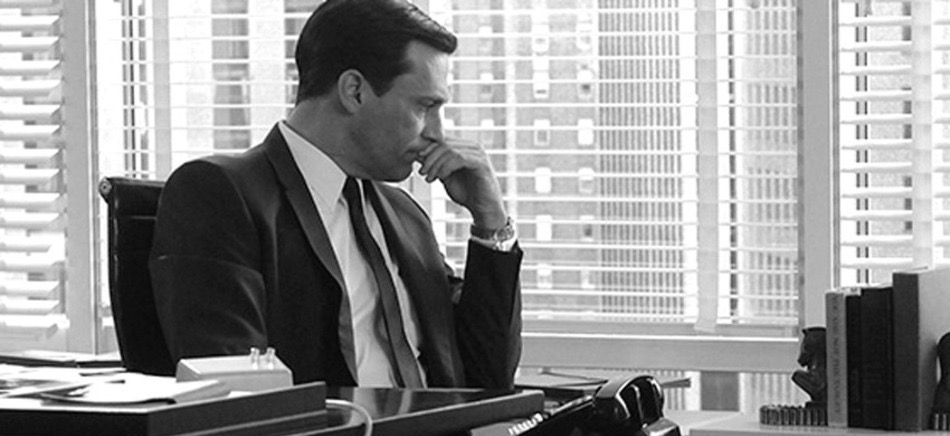 Hello lovely readers. You know what? Having now helped over 10,000 transitioning candidates develop effective personal branding strategies and campaigns to drive career success, it’s a given that I’ve seen a few resumes along the way. As a result, friends often ask if I might review their resumes as well. Now to be honest, after a day coaching folk on how to take their resumes from bog standard to kick ass, attention-grabbing, strength marketing, scan-bot loving documents, it’s kind of the last thing I want to be doing in my leisure time! Unless your reward for my efforts involves a crate of Krug Private Cuvée Champers, an extended holiday in Bora Bora and a bevvy of gorgeous…oh sorry, where was I?
Hello lovely readers. You know what? Having now helped over 10,000 transitioning candidates develop effective personal branding strategies and campaigns to drive career success, it’s a given that I’ve seen a few resumes along the way. As a result, friends often ask if I might review their resumes as well. Now to be honest, after a day coaching folk on how to take their resumes from bog standard to kick ass, attention-grabbing, strength marketing, scan-bot loving documents, it’s kind of the last thing I want to be doing in my leisure time! Unless your reward for my efforts involves a crate of Krug Private Cuvée Champers, an extended holiday in Bora Bora and a bevvy of gorgeous…oh sorry, where was I?
Let me offer you a five-step editing plan that will help you take your resume from okay to pretty damn impressive without that expense…you’re welcome!
Editing is more than just giving your resume a once-over to eliminate egregious typos and grammar mistakes. It’s about looking at it with a critical eye, then making changes to ensure it’s the best it can be. And that’s what you want for your resume, right? Sooo..first up:
1: Consider the Resume’s Aim
On that first read, ignore typos and formatting and think about the overall message your resume is sending. From the top down, ask yourself the following:
Contact details:
• Is my email address professional? (‘sexybeast@hotmail.com’ just won’t do ok?)
• Have I added my LinkedIn URL below my email address and mobile number?
Insider tip – Hotmail addresses have a propensity for landing in the junk mail folder – consider an alternative such as Gmail, outlook etc., just for your marketing purposes
Executive Summary:
• Does my summary start with my ‘functional title’ e.g. ‘Sales Executive’ with expertise in….’
• Does my title follow with skills as they relate to the expectations of the job for which I’m applying?
• Does it summarise the actual strengths and experience I’ve articulated in the body of the resume?
• Does my summary sell me well enough to entice the reader to read more?
Insider tip: Summary should ‘summarise’ strengths depicted in the body of the resume and vice versa.
Career History:
• What makes my experience stand out amongst similarly experienced candidates?
• Are there gaps between the experience on the pages and experience required for the job?
• If so, what can I add to supplement those gaps?
• Are my responsibilities nicely summarised in a tidy three line job scope sentence?
• Do my achievements demonstrate what I did with my responsibilities that made a difference in my past jobs?
• Do my accomplishments answer the critical questions – ‘Why? (Challenge) How? (Actions) and So What? (Results)
• Have I quantified results as proof of outcomes?
• Have I started each achievement with an action verb?
• Have I edited my accomplishments back to sharp three line sentences?
• No more than 10-12 years history included?
Education/Professional Development:
• Have I included the name of the institutes from which I gained my formal qualifications?
• And listed the most relevant professional development courses I’ve attended?
 And…
And…
• Is there anything in the document that doesn’t need to be, such as photos, fancy graphics, hobbies, date of birth, marital status?
• Does the overall text sell me as the perfect candidate for the role?
Insider tip: Quantify the results in achievements where possible. The critical difference between an average resume and a brilliant one.
2: Scrutinize
Now to editing. Walk through your resume again and look at every section, every sentence, and every word and determine if there’s a better way to get your point across:
• Is this the most robust possible language I can use?
• Can anything be said more clearly? Or in fewer words?
• Have I used technical language that someone outside my company or industry might not understand?
• Have my acronyms been spelt out? (Don’t assume the reader will understand them)
• Are there any words I’ve used repeatedly? Can they be replaced with more creative language?
Insider tip: Send your resume to your selected referees, ask them for feedback and adjust accordingly, after all, they’ll be the ones substantiating your claims when called for a reference.
3: Double Check Facts and Stats
 Now review your resume again, this time asking yourself:
Now review your resume again, this time asking yourself:
• Are the companies I’ve worked for named the same thing today?
• Are my position titles accurate?
• Are my employment dates correct?
• Are the stats I’ve used to describe increases, budgets, savings and achievements (reasonably) accurate?
Insider tip: Another reason to seek referee feedback. The facts need to weigh up with their recall.
4: Double Proofread
You can review your document for hours and still fail to notice that you’ve used ‘lead’ instead of ‘led’, ‘there’ instead of ‘their’, ‘manger’ instead of ‘manager’. Don’t rely on Spellcheck alone. Proofreading one last time is a step you can’t neglect. More questions to ask:
• Are there any typos? Wrong word usage?
• Do each of my bullet points end with a period (or not)? Either is fine, be consistent.
• Are my commas in the right place?
• Is my sentence structure grammatically consistent?
• Is everything written in past tense?
• Have I removed all personal pronouns, e.g. ‘I’, ‘we’, ‘our’?
• Are the pages numbered in the footer?
• Is my name on each page in the header?
Insider tip: When proofreading, it’s helpful to read your resume from the bottom up. Again, have someone you trust review for grammar and consistency.
5: Aesthetic Appeal
Now it’s time to give it a final once-over with a designer’s eye, considering:
 • Does each page look visually appealing?
• Does each page look visually appealing?
• Are the pages overly cluttered?• The font too small? Difficult to read?
• Bullet points used for easy readability?
• Do the headings stand out?
• Is the font size and formatting for each section consistent?
• Does the layout make sense?
• No more than three pages max?
Insider Tip: Avoid templates with fancy symbols, fonts and layouts – they are the bain of recruiter’s lives for they’re challenging to extrapolate info from and the scanbots can’t always parse the necessary info that will get you to the ‘read’ pile.
Editing your resume to ensure it’s sharp and focused, sells you effectively and is error free can be exciting, challenging and rewarding all in one. Why? It reminds you of just how much you’ve accomplished in your career. And that boosts your confidence. Which in turn better prepares you for typical behavioural interviews. And the opportunity to negotiate salary because you now know your worth. And ultimately it can land you that job!
Oh! And if you need someone to share your celebratory Champers with, you know where to find me!






 For some experiencing redundancy it’s ‘Yea! I’ve just wheeled out a barrow full of payout money from that fantastic job where they simply couldn’t afford to keep me anymore, a nice reward for my services – now where would I like to work next?’ For others it’s ‘Oh my god, I’m taking the kids out of university, selling the house, moving in with the mother in law, downsizing the car, calling Centrelink!’ And on the rare occasion, ‘I’m taking ’em to court for unfair dismissal, after all the years I’ve served them, this is how they repay me! Well they won’t survive without me I can tell you, the place will go to hell in a basket!’ Whoa! Manage your ‘brand’ there fella! Yes, we each have our own processing mechanisms, but let’s look at the situation objectively…
For some experiencing redundancy it’s ‘Yea! I’ve just wheeled out a barrow full of payout money from that fantastic job where they simply couldn’t afford to keep me anymore, a nice reward for my services – now where would I like to work next?’ For others it’s ‘Oh my god, I’m taking the kids out of university, selling the house, moving in with the mother in law, downsizing the car, calling Centrelink!’ And on the rare occasion, ‘I’m taking ’em to court for unfair dismissal, after all the years I’ve served them, this is how they repay me! Well they won’t survive without me I can tell you, the place will go to hell in a basket!’ Whoa! Manage your ‘brand’ there fella! Yes, we each have our own processing mechanisms, but let’s look at the situation objectively… ss or simply needing to process excessive brain activity and restore calm, it’s no surprise that journaling has re-emerged as a valuable tool for managing your personal carriage on the roller-coaster of this fast paced world. I don’t believe journals/diaries ever left, just that we’ve become too busy to use them…oh the irony! Take a look at a Kikki K catalog these days and you’ll see an evident resurgence – ‘A Sentence a Day Journal’; ‘100 Dreams Journal’ ‘Goals Journal’, ‘Words to Inspire Journal’, ‘Happiness Journal’, ‘Gratitude Journal’, ‘365 Journal’ – the list goes on.
ss or simply needing to process excessive brain activity and restore calm, it’s no surprise that journaling has re-emerged as a valuable tool for managing your personal carriage on the roller-coaster of this fast paced world. I don’t believe journals/diaries ever left, just that we’ve become too busy to use them…oh the irony! Take a look at a Kikki K catalog these days and you’ll see an evident resurgence – ‘A Sentence a Day Journal’; ‘100 Dreams Journal’ ‘Goals Journal’, ‘Words to Inspire Journal’, ‘Happiness Journal’, ‘Gratitude Journal’, ‘365 Journal’ – the list goes on. tually occur? Work back from there on steps you would take to avoid that happening in the first place and suddenly, what might have felt insurmountable just lost it’s spotlight for you are already planning ahead. Which leads to the good part!
tually occur? Work back from there on steps you would take to avoid that happening in the first place and suddenly, what might have felt insurmountable just lost it’s spotlight for you are already planning ahead. Which leads to the good part!